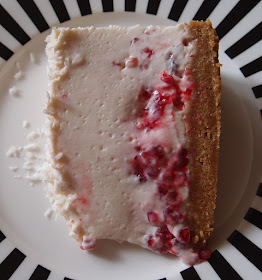You may have noticed that the Olympics have started...if you
live anywhere near London (as I do) your local news has featured at least one
Olympic themed story every day for seven
years and there has been much
unrest over how London will work (and get to work) during the Olympics. Personally, I love the Olympics, but enduring
the protracted build up has rather threatened to take the shine off it all. I’m hoping that, now it’s actually started,
my love will return... I’m sure that an hour or two spent enjoying the mens’ rowing
will be just what the doctor ordered!
One of our great medal hopes (and certainly one of the most popular) is the diver Tom Daley. It is hard to believe he is only 18 years old as he seems to have been around forever! What I admire about Tom, apart from his immense talent and dedication to his sport, is the aplomb with which he conducts himself – he always comes across so well in interviews, and seems to enjoy himself. I think so many modern sports people often look like they forget they’re meant to enjoy it.
I heartily approve of Tom’s choice of chocolate cake and I
went all out to make this as chocolatey as possible; the recipe is basically a
Victoria sponge but chocolated up at every opportunity! (NB. I suspect that “chocolatey” and “chocolated
up” are not proper words, and if they are, they aren’t very pretty. But they just seem right somehow!)
The addition of melted chocolate into the buttercream made
it a firmer, more moussey texture than normal and it had a deep chocolate flavour. It kept well too. Whenever I comment that a cake keeps well I
hope it conveys to you the magnitude of the cake. I think mountaineers could scale the north
face of this one!
Best of luck Tom – the country is behind you! Win us the gold!
Ingredients
For the
cake:
225g unsalted butter, at room temperature
200g golden caster sugar
4 eggs
200g self raising flour
50g cocoa powder
2 teaspoons baking powder
100ml milk
200g golden caster sugar
4 eggs
200g self raising flour
50g cocoa powder
2 teaspoons baking powder
100ml milk
For the
filling:
100g milk chocolate, melted
125g unsalted butter, at room temperature
25g cocoa powder
75g icing sugar
125g unsalted butter, at room temperature
25g cocoa powder
75g icing sugar
Method
Preheat the oven to 190°C/fan oven 170°C/375°F/Gas mark 5.
Line two 20cm round loose bottomed sandwich tins with baking
paper.
In a large bowl beat together the butter and sugar until
light and fluffy – don’t skimp on this stage as this is where the air is
added. Your mixture should look like
over-whipped cream before you stop.
Beat in the eggs one at a time. If the mixture looks like it might curdle add
some of the flour.
Fold in the flour, cocoa and baking powder.
Fold in the milk.
Spoon into the two prepared tins, as evenly as possible (I
do it by eye but you can weigh it if you wish to be more precise) and level the
surfaces.
Bake for 25-35 minutes or until a skewer inserted into the
cakes comes out clean.
Leave to cool in the tins until you can safely de-tin; then
leave to cool completely on a wire rack.
You can keep the sponges in an airtight container for a day
or two before building the finished cake.
Now make the filling: Let the melted chocolate cool a
little, but not so much it sets again. I
like to melt small quantities of chocolate like this in a microwave, giving
short 20 second bursts – but a bowl over a saucepan of simmering water works
just as well.
Whisk the butter, on its own, until it is white and fluffy –
looking like whipped cream almost.
Add the cocoa, icing sugar and melted chocolate and whisk
until well combined and the mixture resembles a thick mousse.
Place one of the sponges, flat side up, on the serving plate
and spread half the filling over it.
Place the other sponge, flat side down, on top and press
gently to make a good seal.
Spread the remaining filling on top and spread over.
Decorate as required.
Bask in the glory of the wonderful thing you have created.
Eat.































